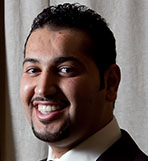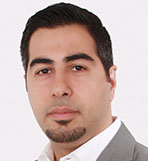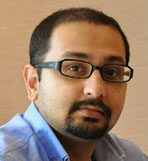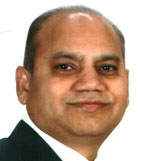Energy thief… ignored even as the ME region loses billions of dollars a year
Faulty and leaky ductwork in buildings in the Middle East is recognised by industry insiders as a hidden spectre that results in significant energy loss, higher power consumption, sick building syndrome and reduced performance of HVAC equipment. Why, then, does the problem remain largely unaddressed in the region?
By Fatima de la Cerna | Assistant Editor
Leaky ductwork is an energy hog that is hidden from view – or at least that’s how Max Sherman, a Senior Scientist at Lawrence Berkeley National Laboratory, in the United States, describes the problem in his article, “Billions in Lost Energy Leaking Out of Home Heating & Cooling Ducts”, which the laboratory published in March 20011.
Focusing his attention on California, Sherman states in his article that ducting systems typically leak 20% to 40% of the state’s heating and cooling energy, before going on to claim: “Statewide, the potential savings from improving ducts is between 1 and 2 gigawatts (GW) of electricity alone. No single efficiency improvement has equivalent savings potential.” Quantifying his claim, he says: “The potential savings from sealing residential ducts in California adds up to USD 1 to 2 billion per year.”
Sherman’s article was published 14 years ago. However, the problem he examined persists, not only in California but in all of the United States, with the US EPA estimating that in an average American home, “about 20 per cent of the air that moves through the duct system is lost due to leaks and poorly sealed connections”2.
But is it an issue that concerns only American homeowners?

Kiro Naumov, Managing Director of Firestop Middle East
Kiro Naumov, Managing Director of Firestop Middle East, regards leaky ductwork as such a severe and widespread global problem that when asked to comment on the topic, describes it as an “epidemic”. Elaborating, he says: “Current research in Europe and in the US indicates that air duct tightness is a pervasive concern. The ASHRAE Handbook indicates that 75% of commercial buildings in the US suffer from 10% to 25% leakage. Similarly in Europe, field testing shows that air leakage is routinely 15% or more, while recent field testing in Australia and the Philippines indicates a similar scope of the problem. We can assume the same issue is present in the region [Middle East].”
It would seem like a sound assumption to make, with Amrit Saxena, Business Development Director of Macsil General Trading Company, revealing that air leakages in an average building in the Middle East “constitute an energy loss of around 30% to 40% for newly constructed buildings, peaking at up to 60% to 70% for buildings 15 years and older”.

Noor Eldin Mohammed Al Bargouthi, Senior Mechanical Engineer at the Building Department of Dubai Municipality
In a way echoing Saxena’s figures, Noor Eldin Mohammed Al Bargouthi, Senior Mechanical Engineer at the Building Department of Dubai Municipality, shares the view that in Dubai, energy loss due to faulty HVAC ductwork could be “40%, roughly”. He is, however, quick to clarify that approximation, saying: “Actually, it depends on the application of the building. It should be less than 30% for villas and townhouses – for horizontal projects. But for skyscrapers, it could be as much as 40% to 50%. It could also vary according to the quality of the project. If you have a project with very high standards for labour, materials and installation work, the percentage will definitely be lower.”
Al Bargouthi’s emphasis on standards playing a part in leakage-related energy loss reflects his view that the problem of leaky ducting systems can be traced to either inexperienced labour or poor installation practices. And it’s a view shared by others.
“In the time I’ve spent in this industry,” Saxena says, “I have realised that this is a very aesthetic region, meaning elements of a building that are visible to the public are given much greater importance than something tucked over a false ceiling. Because of this reason, many MEP contractors and duct fabricators can be seen cutting major corners, such as using only a small percentage of the recommended amount of duct sealant or, in some projects, not using any at all. This type of practice – combined with the use of poor quality materials, limited information availability and unwillingness of consultants to revise specifications written at least five to 10 years back – result in the current situation we have.”

Hassan Younes, Technical Director and Partner at Griffin Consultants and Vice Chair of the ASHRAE Falcon Chapter Grassroots Government Affairs and Chapter Technology Transfer Committee
Hassan Younes, Technical Director and Partner at Griffin Consultants and Vice Chair of the ASHRAE Falcon Chapter Grassroots Government Affairs and Chapter Technology Transfer Committee, agrees that mediocre workmanship is partly to blame for the region’s defective HVAC ducting systems. “A big factor is poor installation practices,” Younes says. “Normally, duct leakages occur on transverse joints, longitudinal seams and duct penetrations. Poor facilities management (FM) is also a main contributor. In some cases, we have observed unqualified maintenance personnel using ducts as walkways, leaving testing holes and smoke dampers open and not checking holes that have developed due to rust.”
The issue of poor FM, Younes points out, makes addressing the trouble with HVAC ducting systems even more of a challenge than it already is. “Technical facility management is still not being taken seriously in the region due to lack of competent maintenance personnel,” he says. “A lot of developers and building owners favour FM companies with lower fees over companies offering higher quality services, which would, of course, result in compromises.”
In addition to FM and installation issues, lack of duct-leakage-testing requirements also poses a challenge, Younes adds, disclosing, “From the resistance we face from contractors when we request air-leak testing, I can conclude that not a lot of consultants or projects require that it be carried out.”

Alex Cargopoulos, Business Development Manager at Smashing! Cleaning Services
Alex Cargopoulos, Business Development Manager at Smashing! Cleaning Services, voices a similar observation. “While we have completed many duct-leakage tests on new buildings over the last few years,” he says, “the number of new developments being announced and the number of buildings under construction, compared with the number of companies approved to conduct leak testing, would suggest that not everyone is following recommendations for testing.”
Cargopoulos further admits, “Majority of the leak detection we do is usually after the symptoms of duct leakage have been observed for some time.”
Delayed detection of duct leakage is a pervasive problem, one that both Naumov and Al Bargouthi attribute to the fact that leaks are – as Sherman put it – hidden from view.
“This problem is silent; it is invisible,” Al Bargouthi says. Naumov, meanwhile, is even more forthright, calling air leakages “an evil not seen”, before bringing up leaky water pipes for comparison: “Leaking water can be seen, hence easier to address. Air leakages, on the other hand, are a fact of life. There will always be leakages. The goal is to minimise them.” He remarks that achieving the goal, however, can be difficult since regulations are not being sufficiently enforced.
All five experts are in agreement that there is no shortage of standards and regulations that cover the issue of leaky and faulty ductwork.
“The SMACNA HVAC Air Duct Leakage Manual is the main standard we follow when inspecting, reporting on and planning a duct-leakage-testing project,” says Cargopoulos. “It outlines leakage limits as well as testing procedures for conformity with those limits.”
Other than SMACNA, Cargopoulos identifies The International Green Construction Code Version 2, IAPMO’s Green Plumbing and Mechanical Code Supplement (2010), the International Energy Conservation Code (2012) and ASHRAE 90.1 as among the standards his company uses.
In terms of regulations, meanwhile, he indicates that in the UAE, the Green Building Code of Dubai and the Pearl Rating System of Abu Dhabi address air leakage, saying: “The Dubai Green Building Code Practice Guide specifies which designs of HVAC system and ductwork layout require duct-leakage testing, and decrees that this must be carried out by a company approved to do so by Dubai Municipality. Likewise, in Abu Dhabi, new buildings looking to earn an Estidama Pearl Rating are required to follow strict requirements for air tightness in order to achieve minimum energy efficiency. And this is a requirement; no additional credit is given for meeting these parameters.”
Touching on standards, Younes also names SMACNA as the guidelines to be followed for leakage-testing procedures, while describing ASHRAE 90.1 as the benchmark being followed by most GCC region countries. “ASHRAE 90.1 mandates duct-leakage testing to be done on all systems that have a static pressure of three inches or more,” Younes says.
On the subject of regulations, Younes says: “Building codes in the area are beginning to align themselves with international building codes, which require proper duct sealing, as well as testing for ducts that are under a static pressure above 750 Pa (three inches). Dubai Municipality’s Green Building Codes require leakage testing for all ducts located outdoors and any system having a static pressure above 250 Pa (one inch), which is more stringent than ASHRAE 90.1 and the International Energy Conservation Code (IECC). However, it is yet to be assessed if the requirement is strictly and fully enforced.”
Speaking candidly on the matter of enforcement, Al Bargouthi says, “To be honest, right now, the focus is on air leakage of the building [envelope] itself, because we want to ensure that buildings are kept safe from untreated air, and in the area of ducting, we still don’t have our inspectors checking the installation materials.” He makes sure to stress, though, that Dubai Municipality is fully informed on the severity of the problem of leakages in ducting systems, pointing out that having testing and commissioning regulations is a significant step in addressing the issue.
“Everyone needs to think seriously about the problem with ducting, with its installation and maintenance, because it affects our energy consumption and our electricity bills,” says Al Bargouthi.
Al Bargouthi’s sentiment is shared by the rest, who express the need for complete awareness of the different implications of leaky ducts.
“In the US alone, commercial buildings account for approximately 20 quadrillion BTUs of annual primary energy consumption, or approximately 25% of the overall non-transportation power consumption,” Naumov says. “HVAC systems typically account for 50% to 60% of the overall energy consumption of commercial buildings; hence, reducing excessive air-duct leakage, in the United States, has the potential of saving upwards of 500 trillion BTUs of energy, annually.”
Naumov observes that with the Middle East having a less-skilled workforce than the United States, not to mention a greater dependence on air conditioning equipment, due to a harsher climate, the region could reasonably be expected to have a worse ducting problem and to be losing more energy and savings. Just how much, Saxena offers an estimate: “In this region, the average building uses at least around 50% – a conservative estimate, because the real figures could go up to more than 70% – of power for its HVAC system. Considering the minimum value of 50%, the average savings for a G+9 building in Dubai would be anywhere around AED 2 to 3 million or AED 200 to 300 per square feet, and both amounts are for a 10-year period from just a single building. This means that if regulations were enforced for new buildings today, in two to five years, we could potentially be saving power worth more than AED 100 million yearly – and without a significant change in project pricing.”
The consequences of air leakages are not limited to energy loss and higher power consumption, though.
“Clearly, supply duct leakages occurring indoors can lead to increased energy expenditure due to the leaking air not being delivered to where it is needed,” Younes says. “But that is in addition to mould formation in plenums, caused by low-temperature air leaking negatively into negatively pressurised return plenums. On the other hand, in return ducting, outdoor air leakage into the return add unnecessary loads to the AC system, while leakage into indoor return system can bring additional loads or alter pressurisation patterns in rooms. Indoor Air Quality issues can arise from duct leakage, when the leakage occurs in an area prone to pollutants.”
Expressing the same concerns as Younes, Cargopoulos says: “Leakage anywhere in an HVAC system can cause a number of performance issues in its components, as well as have severe health implications for the building’s occupants.” Going into greater detail, he adds, “Particularly during the summer months, any leaks in outdoor ducting will place great strain on an air-handling unit, and this strain will inhibit the system’s ability to do what it was designed to do, which is to deliver cool, dry air to the occupied space, making it inevitable that a build-up of moisture and contaminants will ensue.”
Cargopoulos further explains: “Any ingress of contaminants into a building, as a result of duct leakage, which is quite common due to the frequency of sandstorms in the region, will affect the health of occupants, especially those already suffering from pre-existing respiratory illnesses like asthma and allergies.”
Those without pre-existing conditions are not safe, either. Cargopoulos points out that a build-up of moisture “creates the perfect breeding environment for moulds and other bacteria, in the presence of organic materials like dust and sand, which in turn, can lead to chronic respiratory conditions in people who have not suffered from problems before”.
Other than affecting the indoor environment of buildings, the unnecessary load and strain on the HVAC systems mentioned by Younes and Cargopoulos can also impair the performance and lifespan of the HVAC systems.
“Interior air duct leakage results in short cycling of the HVAC system, with air leaking out of the supply duct being drawn into the return without passing through the occupied space,” Naumov says. “This causes the HVAC system to operate longer, and the extended operating hours of the system can increase maintenance costs and, eventually, result in premature replacement of the system or its components.”
With the alarming energy cost and health implications of leakages in ducting systems, it is apparent that steps must be taken to, if not eliminate, at least minimise their occurrence. But considering the challenges that have been presented, what are the avenues of action available to industry stakeholders? What measures can they take to reduce the incidence of air leakages?
MEP contractors and duct fabricators, Younes says, should adhere to standards like SMACNA, while facility managers should “make sure that smoke dampers are always tight and not leaking into return ducts, visible holes are fixed and periodical leakage testing is in place”. In the case of policymakers, he suggests: “Authorities should look into enforcing duct-leakage testing for outdoor ducts once every five years and not only during the initial commissioning of buildings. As I’ve mentioned, Dubai Municipality already recognises the issue with its inclusion of testing requirements in its Green Building Codes. And we have studied the effect of duct leakage on energy loss in all of our energy-auditing projects. The frequency of such leaks is striking.”
For Naumov, commissioning companies have a large part to play. “Commissioning people,” he says, “are the last line of defence and should provide honest results. Proper building commissioning practices are the best method to ensure that air duct tightness standards are achieved.”
While he agrees with the points on testing, commissioning and enforcement of regulations, Saxena also highlights the advantage of using high-quality products and solutions. “Duct fabricators should use quality UL-listed duct sealant on all longitudinal and transverse joints of the ducts,” he says. “A UL-listed sealant will not crack during system vibrations. Duct fabricators and MEP contractors may also propose to clients and consultants that they apply microbial-resistant sealant coatings inside the ducts to eliminate air leakages and the possibility of mould growth.”
Also dispensing specific advice, Cargopoulos explains that when leakages are suspected, the first step to take is identifying the location of the leaks. “This can be done with smoke testing or thermo-graphic imaging,” he says. “Once the key problem areas have been identified, a range of materials, such as foams, mastics and even aerosolised adhesive particles, can be used to address the leaks.”
In addition to providing practical tips on leak detection and offering solutions, Cargopoulos calls for industry players to exhibit a sense of ownership. “There will always be poor products and cheap installers out there,” he says, adding, “The main factor behind leakages is the quality-control process. Installers, contractors, facilities and building management companies, and the building owners themselves need to take responsibility and ensure that appropriate standards and best practices are followed, from the design right up to the commissioning stage.”
The question is: what will make stakeholders feel a sense of responsibility, especially over a problem that is hidden from view? What will motivate them to take notice of an issue that has largely been ignored for so many years?
For Cargopoulos, awareness of the severity of the problem will. He says: “I think knowledge of the implications of not inspecting or testing for duct leakage will lead to many more building and facilities managers and MEP contractors taking the problem seriously. The information is easily available; a quick search online will open up a vast amount of literature on the subject.”

mrit Saxena, Business Development Director of Macsil General Trading Company
Younes, also highlighting the value of information and of an educated industry, draws attention to the lack of research on the issue of leakages in HVAC ducting systems in the Middle East. “No comprehensive studies have been carried out in the region,” he says. To raise awareness of the problem, he recommends that action be taken to tackle the dearth of local information, starting with “case studies on buildings that show the cost related to duct leakages”. Such studies, he said, could help prompt building owners to “start rectifying duct leakages”.
Saxena supports the idea of research as well, noting that although small-scale studies have been made in the region, a “much larger study needs to be carried out, which can only be sponsored by a third party, like the government”.
While there’s no telling just yet if governments in the GCC region would ever consider conducting large-scale research on air leakages, headway is reportedly being made in the area of information collection. That is, at least in Dubai, with H.H. Shaikh Mohammad Bin Rashid Al Maktoum, Vice-President and Prime Minister of the UAE and Ruler of Dubai, having launched in 2014 the Dubai Smart City strategy, which should eventually prove useful to the industry.
“Once the Dubai Smart City project is complete,” Al Bargouthi says, “we will be able to provide statistics. With all the buildings in Dubai connected, we will have a database for all of them, and that database will contain information on Indoor Air Quality and energy consumption, including component areas, like HVAC, water, controls and so many more.”
The smart city project is a good project, Al Bargouthi says. And it’s one that he says he is confident will, eventually, bring about positive changes to built-environments, not the least of which is a reduction of leaks in ducting systems. That will certainly be a positive change, for as Sherman also states in his 14-year-old article, better ductwork is a win for everyone. It’s a win for the environment, the government, the building owners and the building occupants, for it would mean reduced energy consumption, carbon footprint and electricity bill, as well as healthier and more comfortable indoor environments.
References:
1 http://www2.lbl.gov/Science-Articles/Archive/leakyducts-billions.html
2 http://www.epa.gov/greenhomes/WholeHouse.htm
An exercise in assumptions

Rakesh Saxena, General Manager of Toronto, Canada-based Trimac Inc
The following calculations, which were drawn up by Rakesh Saxena, General Manager of Toronto, Canada-based Trimac Inc, show the potential savings that Dubai can accrue just from sealing HVAC air leaks. Do note that listed figures are based only on assumptions and estimations and are not intended to be taken as statistics.
| Installed capacity in Dubai for 2013, in kW1 | 9,656,000 | |
| Assuming 80% capacity utilisation during summer | (9,656,000 x 0.8) | 7,724,800 kW |
| Assuming 70% of that is used in the buildings | (7,724,800 x 0.7) | 5,407,360 kW |
| Assuming 50% is used for AC* | (5,407,360 x 0.5) | 2,703,680 kW |
| Total energy used for AC | 2,703,680 kW | |
| If 30% is saved by sealing ducts | (2,703,680 x .0.3) | 811,104 kW |
| Cost per kWh, in AED | 0.24 | |
| Saving per hour (rounded off) | (811,104 x 0.24) | AED 194,665 |
| Saving per year assuming AC is in use for 240 days | (194,665 x 24 x 240) | AED 1.12 billion |
| Equivalent to CO2 emission, tonne per year2 | 2,443,435 | |
| Equivalent to cars removed from the road, per year3 | 498,660 | |
| Equivalent to number of households supplied with electricity, per year3 | 207,352 | Assuming 20,000 kWh per year, per household |
| *As per Noor Eldin Mohammed Al Bargouthi of Dubai Municipality, 50% is a low estimate, with the real figure being higher, around 70%.
Sources: |
||
Copyright © 2006-2025 - CPI Industry. All rights reserved.